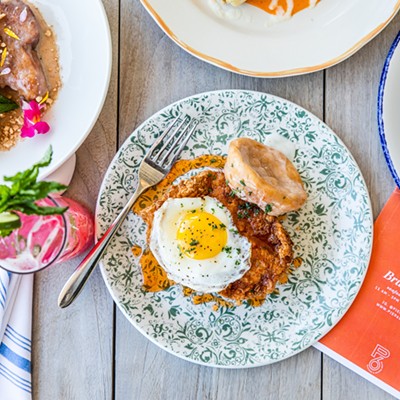Support Us
Houston's independent source of
local news and culture
account
- Welcome,
Insider - Login
- My Account
- My Newsletters
- Contribute
- Contact Us
- Sign out
[
{
"name": "Related Stories / Support Us Combo",
"component": "11591218",
"insertPoint": "4",
"requiredCountToDisplay": "4"
},{
"name": "Air - Billboard - Inline Content",
"component": "11591214",
"insertPoint": "2/3",
"requiredCountToDisplay": "7"
},{
"name": "R1 - Beta - Mobile Only",
"component": "12287027",
"insertPoint": "8",
"requiredCountToDisplay": "8"
},{
"name": "Air - MediumRectangle - Inline Content - Mobile Display Size 2",
"component": "11591215",
"insertPoint": "12",
"requiredCountToDisplay": "12"
},{
"name": "Air - MediumRectangle - Inline Content - Mobile Display Size 2",
"component": "11591215",
"insertPoint": "4th",
"startingPoint": "16",
"requiredCountToDisplay": "12"
}
,{
"name": "RevContent - In Article",
"component": "12527128",
"insertPoint": "3/5",
"requiredCountToDisplay": "5"
}
]
New York restaurateur Danny Meyer of Union Square Hospitality Group caused a stir in the restaurant industry last year when he announced that his restaurants, which include The Modern and Gramercy Tavern, would move to a no-tipping model called, “Hospitality Included.” Customers would no longer need to tip, employees would be paid a higher wage by the hour and menu prices would rise to reflect that.
Meyer is sticking with his experiment so far, and restaurants across the nation are considering implementing the same model. An American Express trade survey released last month suggests that 29 percent of restaurant owners plan to do away with tipping. Yet, some initial adopters have already had to re-implement the old gratuity system. While the industry has been busy selling fellow restaurant owners on the concept, there are two important groups who are unsure about it, if not flat-out against it: customers and servers.
Joe’s Crab Shack was the biggest company to implement the system to date. It did a trial run in 18 units in November 2015. Server wages were raised to $14 per hour (as opposed to the below-minimum-wage rate of $2.13 an hour plus gratuities) and menu prices increased by 12 to 15 percent. Only seven months later, in May 2016, the company reinstated the tipping model at all but four locations. The company is still studying those four to try and figure out why the gratuity-free system worked there and not elsewhere.
CEO Bob Merritt of Joe's Crab Shack's Houston-based parent company, Ignite Hospitality, was quoted by Nation’s Restaurant News as saying, “The system has to change at some point but our customers and staff spoke very loudly. And a lot of them voted with their feet.” Furthermore, an internal customer survey suggested that 60 percent disliked the new system for two reasons: they didn’t trust that management was actually passing on the markup on dishes to the employees and, probably most importantly, they didn’t like losing the ability to provide incentives to servers.
The latter is the trickiest part of the equation, because it has to do with human nature. Diners fear situations where service is bad and there’s no recourse (short of never returning to the restaurant). The Joe’s Crab Shack experiment failed at seventy-eight percent of the test locations even though the new system would have saved money for customers who commonly tip more than fifteen percent. (Again, the menu price increase was 12 to 15 percent and a 20 percent tip is standard dining etiquette for a good job—not even an exceptional one, just a good one.)
The results mirror a Horizon Media survey of 3,000 diners where 81 percent said they were against moving to a no-tipping system.
There are many excellent reasons for going to a no-tipping system that include fixing the massive wage disparity between front-of-house and kitchen staff. It’s not unusual for a grueling cooking job to pay only $10 per hour while servers skate out the door with $200 to $300 on busy nights. While some servers might appreciate a reliable income, others are loath to give up the thrill and potential of a winning, lucrative night. (The “how much am I going to make tonight” game is akin to a mild form of gambling—and some people get addicted to the possibility of a big win.)
So far, no one seems to have figured out a no-tipping system that doesn’t rely on the altruism of both customers and servers. After the Joe’s Crab Shack experiment (mostly) failed, there’s been muttering of, “Well, it’s a chain. Their customers wouldn’t get it anyway.” That’s the same kind of arrogance that made people learn to hate the term, “mixologist.” Let’s not insult Jane and Joe Customer, for those are the same people who need to be sold on a no-tipping system.
That attitude also fails to take into consideration the experiences of independent restaurants that also tried to implement “no-tipping” and failed. Restaurateur Thad Vogler, proprietor of Bar Agricole and Trou Normand in San Francisco saw a 70-percent turnover in waitstaff during his experiment with “hospitality included.” Even though menu prices were raised 20 percent, Vogler told CNN that wasn’t sufficient to “cover the raises to the kitchen staff, maintain wages for his servers and the taxes that increased due to the compensation shift.” Fedora in New York dropped their own tip-less system after four months.
There’s evidence that paying servers $14 or $15 an hour isn’t going to cut it. According to a study by the National Center For Policy Analysis, the median hourly wage is actually $30. Cash tips often go under-reported and that may be the reasons why restaurateurs didn’t anticipate the resulting server turnover and dissatisfaction.
In order for no-tipping to work, restaurateurs will have to devise an easy, cash-less way for customers to provide feedback on service, thus maintaining their sense of security and control.
There are a few bright spots for restaurant owners who desperately want to equalize pay for their employees. The same survey that indicated that a majority of diners are currently against no-tipping systems also revealed the biggest supporters: young adults. According to a report on the survey by Eater, “29 percent of people ages 18 to 34 believe tipping is an outdated and unfair practice.” Additionally, a few brave trailblazers are eliminating tipping anyway and whether or not it succeeds, they are gathering more data for the rest of the industry.
Another ray of hope comes from the originator of this grand experiment. Danny Meyer is reporting that The Modern is more profitable than ever. Business is up. Perhaps most significantly: applications for kitchen positions have climbed by a whopping 270 percent.
Wide-ranging implementation of “hospitality included” will come slowly, the end result of a sea change in restaurant culture and customer perception. Chances are, though, as young diners get older, develop bigger incomes and exert more influence, the climate will be more favorable in the years to come.
KEEP THE HOUSTON PRESS FREE...
Since we started the Houston Press, it has been defined as the free, independent voice of Houston, and we'd like to keep it that way. With local media under siege, it's more important than ever for us to rally support behind funding our local journalism. You can help by participating in our "I Support" program, allowing us to keep offering readers access to our incisive coverage of local news, food and culture with no paywalls.
Phaedra Cook
Contact:
Phaedra Cook
Trending Food & Drink
- Openings and Closings: Blue Tuba Opens Soon, Prego Will Depart
- Houston’s 5 Best Weekend Food Bets: Beer, Crawfish and Pickleball
- Upcoming Houston Food Events: Greek Easter and a Top Taco Throwdown
-
Sponsored Content From: [%sponsoredBy%]
[%title%]

Don't Miss Out
SIGN UP for the latest
food & drink
news, free stuff and more!
Become a member to support the independent voice of Houston
and help keep the future of the Houston Press FREE
Use of this website constitutes acceptance of our
terms of use,
our cookies policy, and our
privacy policy
The Houston Press may earn a portion of sales from products & services purchased through links on our site from our
affiliate partners.
©2024
Houston Press, LP. All rights reserved.




